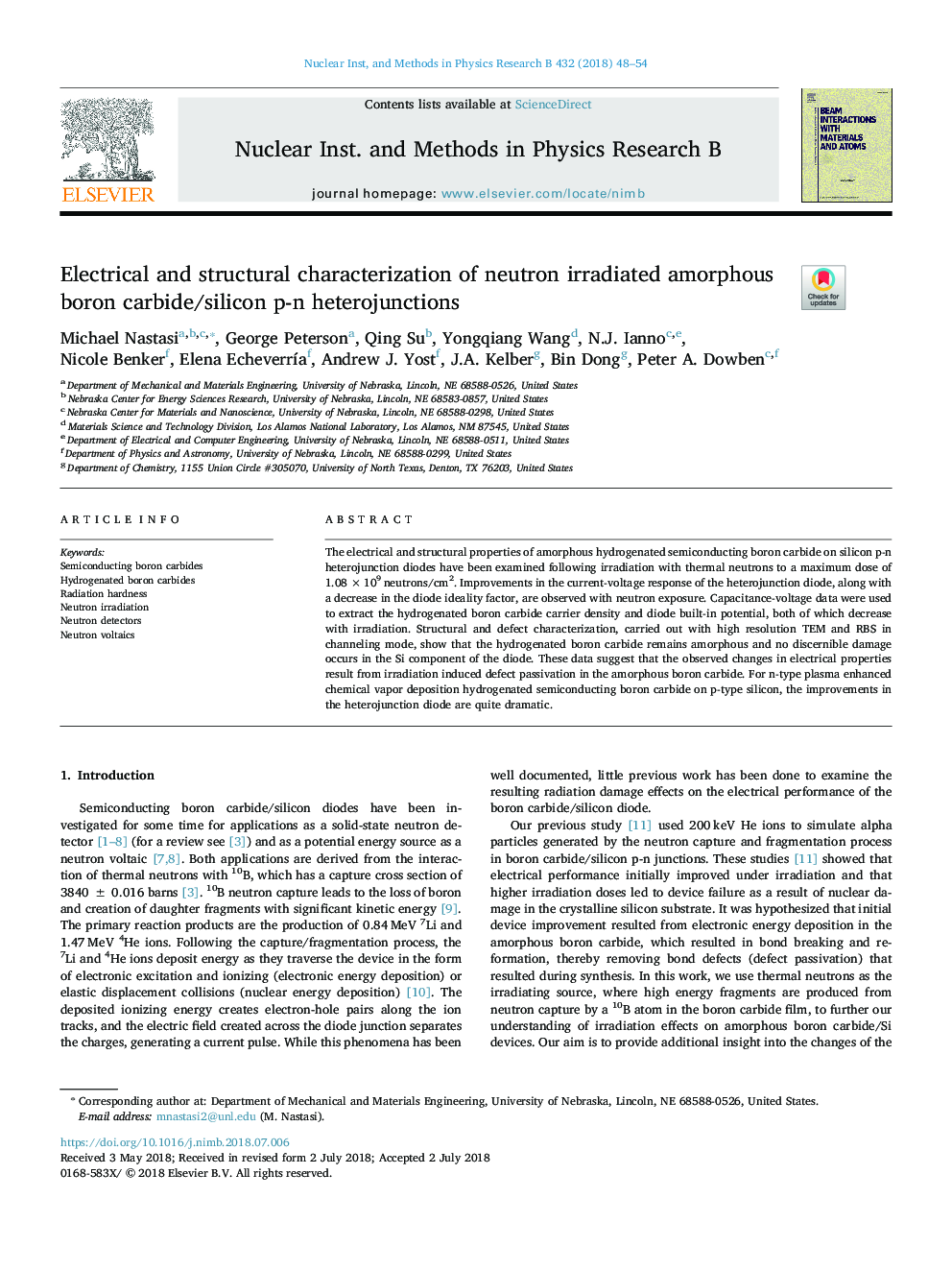| Article ID | Journal | Published Year | Pages | File Type |
|---|---|---|---|---|
| 8039043 | Nuclear Instruments and Methods in Physics Research Section B: Beam Interactions with Materials and Atoms | 2018 | 7 Pages |
Abstract
The electrical and structural properties of amorphous hydrogenated semiconducting boron carbide on silicon p-n heterojunction diodes have been examined following irradiation with thermal neutrons to a maximum dose of 1.08â¯Ãâ¯109â¯neutrons/cm2. Improvements in the current-voltage response of the heterojunction diode, along with a decrease in the diode ideality factor, are observed with neutron exposure. Capacitance-voltage data were used to extract the hydrogenated boron carbide carrier density and diode built-in potential, both of which decrease with irradiation. Structural and defect characterization, carried out with high resolution TEM and RBS in channeling mode, show that the hydrogenated boron carbide remains amorphous and no discernible damage occurs in the Si component of the diode. These data suggest that the observed changes in electrical properties result from irradiation induced defect passivation in the amorphous boron carbide. For n-type plasma enhanced chemical vapor deposition hydrogenated semiconducting boron carbide on p-type silicon, the improvements in the heterojunction diode are quite dramatic.
Related Topics
Physical Sciences and Engineering
Materials Science
Surfaces, Coatings and Films
Authors
Michael Nastasi, George Peterson, Qing Su, Yongqiang Wang, N.J. Ianno, Nicole Benker, Elena EcheverrÃa, Andrew J. Yost, J.A. Kelber, Bin Dong, Peter A. Dowben,
